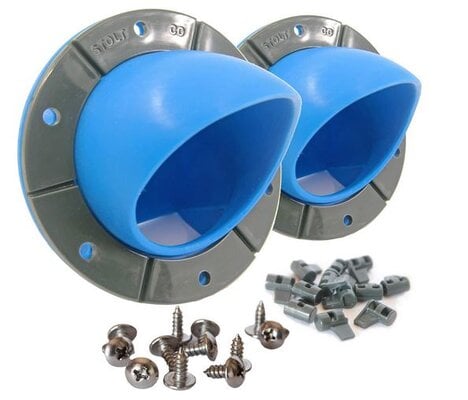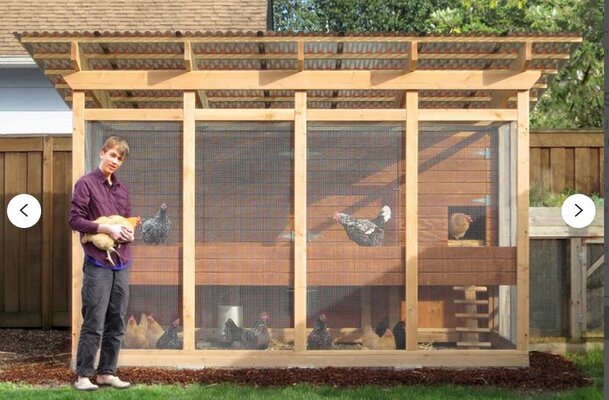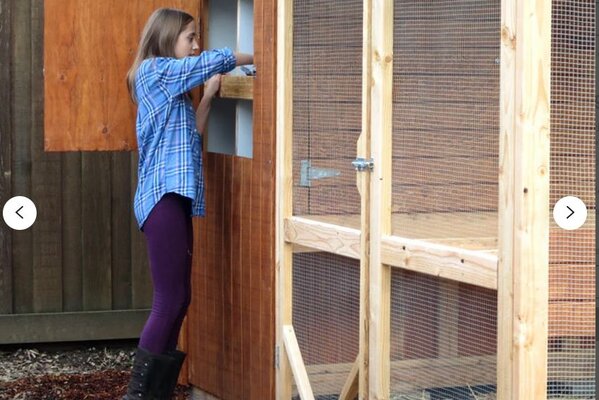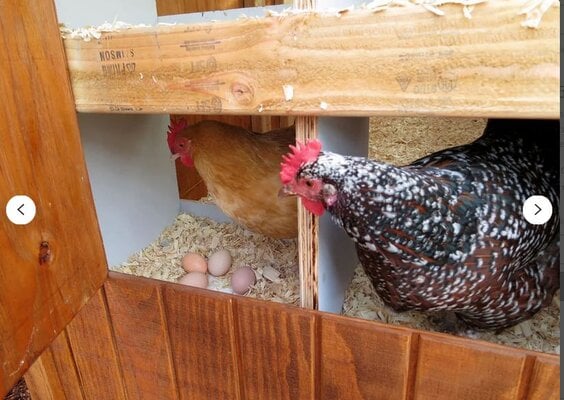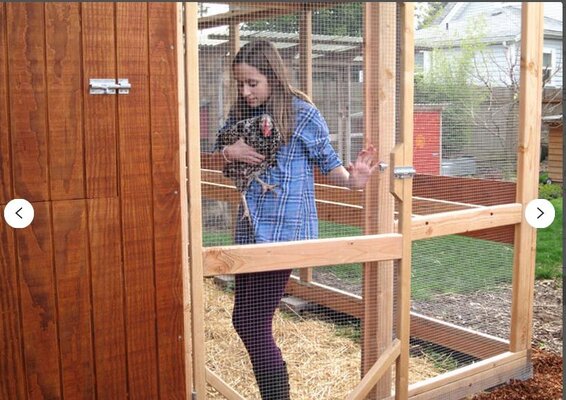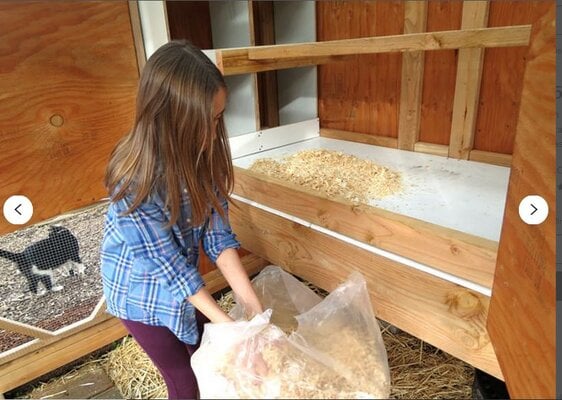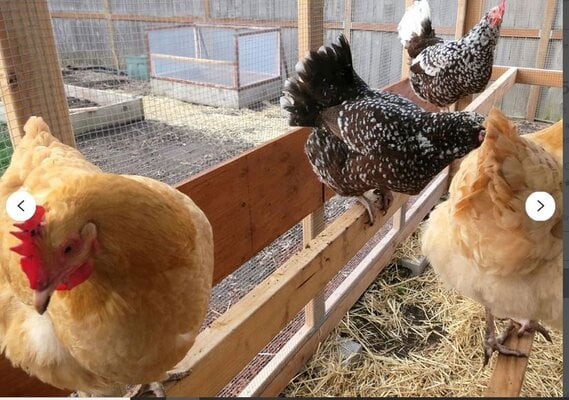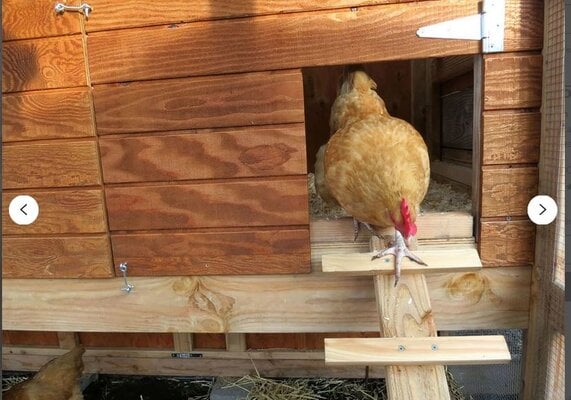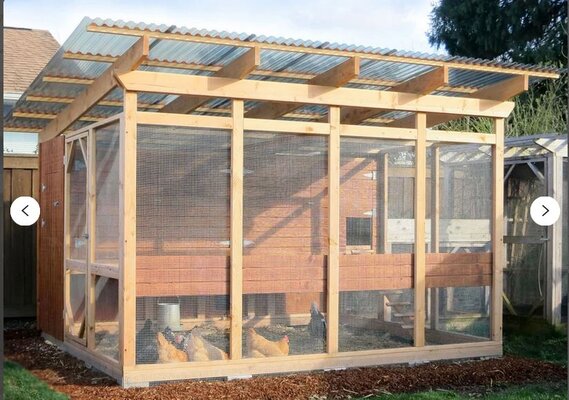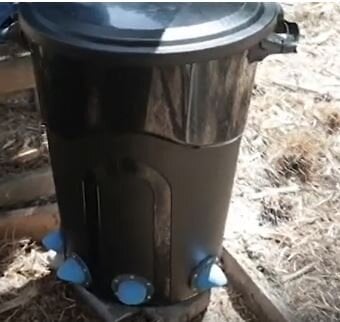GetFitWithKrista
Chirping
This discussion is for the MINIMALISTS - those who think less is more in chicken keeping.
Hi all, I am new to chickens. I want to create the most efficiently run coop possible with the least amount of work. I am not lazy but I am generally efficient in my life and I know that running a backyard chicken gig can be too, like anything else. Since I'm new though, I need some guidance. I am okay with putting in a little extra work in the setup to make it easier on myself as I go. Do you have any tips to keep things simple or can you share your setup if it is similar?
Here is some info pertaining to my situation:
I'm in New Jersey.
We're building a henhouse for 5 hens (see photos)
- Henhouse 11.5'w x 9'd x 8.5'h
- Coop 11.5'w x 3'd
- Integrated enclosed/covered run 11.5'w x 6'd
Coop
- I am hoping to use course sand so it is scoopable. I have read that it doesn't really need to be changed out completely but more may need to be added as you go.
- Our structure is wood but we were thinking of attaching vinyl to the inside of the coop to it's easily wipeable
- Is it possible to do the coop poop cleanup 3 days a week instead of every day and not cause problems?
- I have heard of the droppings boards but I don't know how to add it to my setup (see photo of coop) or if it's even needed for my situation.
- We were thinking about using removable sanded PVC bars in the coop and run so they are easily wipeable and they hold up.
Run
- We have grass now but I know it will become dirt quickly. Can it stay dirt? Will it be gross and harbor bacteria?
- I can throw down a little bit of some kind of material but I don't want something that needs to be changed out more than once a year or needs maintenance.
Food
- We researched using a large trash bin and adding feeders (see photos) so it only needs to be refilled periodically and it stays neat.
Water
- Rain barrel so it's basically automated.
Nesting boxes
- I have no plan for this other than I was told to use something that is soft and can be removed to be cleaned.
Thanks in advance for any info you would be willing to share with me. I'm grateful.
Hi all, I am new to chickens. I want to create the most efficiently run coop possible with the least amount of work. I am not lazy but I am generally efficient in my life and I know that running a backyard chicken gig can be too, like anything else. Since I'm new though, I need some guidance. I am okay with putting in a little extra work in the setup to make it easier on myself as I go. Do you have any tips to keep things simple or can you share your setup if it is similar?
Here is some info pertaining to my situation:
I'm in New Jersey.
We're building a henhouse for 5 hens (see photos)
- Henhouse 11.5'w x 9'd x 8.5'h
- Coop 11.5'w x 3'd
- Integrated enclosed/covered run 11.5'w x 6'd
Coop
- I am hoping to use course sand so it is scoopable. I have read that it doesn't really need to be changed out completely but more may need to be added as you go.
- Our structure is wood but we were thinking of attaching vinyl to the inside of the coop to it's easily wipeable
- Is it possible to do the coop poop cleanup 3 days a week instead of every day and not cause problems?
- I have heard of the droppings boards but I don't know how to add it to my setup (see photo of coop) or if it's even needed for my situation.
- We were thinking about using removable sanded PVC bars in the coop and run so they are easily wipeable and they hold up.
Run
- We have grass now but I know it will become dirt quickly. Can it stay dirt? Will it be gross and harbor bacteria?
- I can throw down a little bit of some kind of material but I don't want something that needs to be changed out more than once a year or needs maintenance.
Food
- We researched using a large trash bin and adding feeders (see photos) so it only needs to be refilled periodically and it stays neat.
Water
- Rain barrel so it's basically automated.
Nesting boxes
- I have no plan for this other than I was told to use something that is soft and can be removed to be cleaned.
Thanks in advance for any info you would be willing to share with me. I'm grateful.

